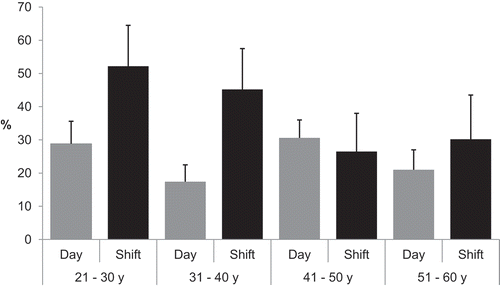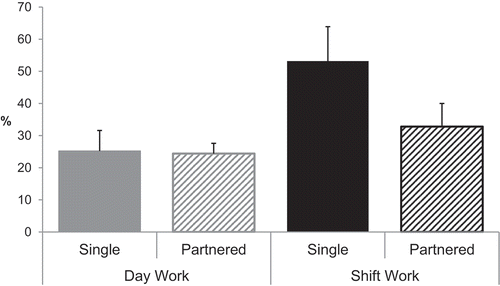Figures & data
Table 1. Socio-demographic characteristics (mean, SD: standard deviation) of day workers and shift workers, within the age range of 21–60 years, and drawn from a representative sample of 2089 persons. Data as indicated in first column. Pairwise comparisons were made using Pearson χ2, t-test or Mann–Whitney U-statistic.
Table 2. Mean (SD) scores for 12 sleep-related variables (range of variation), classified into 4 clusters.
Table 3. Prevalence rates (95% Confidence interval). Asterisk (column 3) indicates a significant outcome of a Pearson χ2-test for shift workers versus day workers, respectively, for age (column 4; p < .05). Column 4: D = Day work, S = Shift work.


